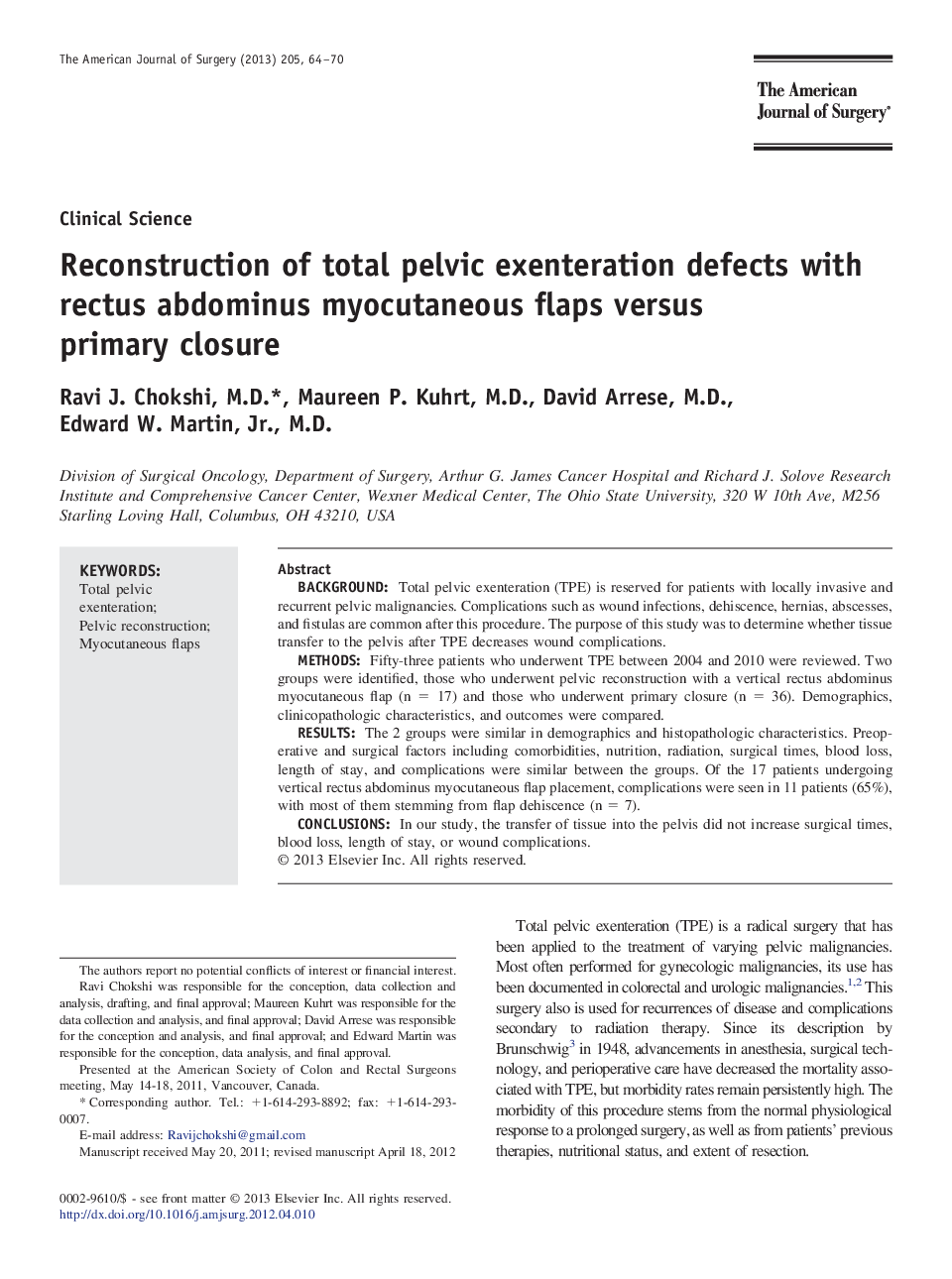| Article ID | Journal | Published Year | Pages | File Type |
|---|---|---|---|---|
| 4279462 | The American Journal of Surgery | 2013 | 7 Pages |
BackgroundTotal pelvic exenteration (TPE) is reserved for patients with locally invasive and recurrent pelvic malignancies. Complications such as wound infections, dehiscence, hernias, abscesses, and fistulas are common after this procedure. The purpose of this study was to determine whether tissue transfer to the pelvis after TPE decreases wound complications.MethodsFifty-three patients who underwent TPE between 2004 and 2010 were reviewed. Two groups were identified, those who underwent pelvic reconstruction with a vertical rectus abdominus myocutaneous flap (n = 17) and those who underwent primary closure (n = 36). Demographics, clinicopathologic characteristics, and outcomes were compared.ResultsThe 2 groups were similar in demographics and histopathologic characteristics. Preoperative and surgical factors including comorbidities, nutrition, radiation, surgical times, blood loss, length of stay, and complications were similar between the groups. Of the 17 patients undergoing vertical rectus abdominus myocutaneous flap placement, complications were seen in 11 patients (65%), with most of them stemming from flap dehiscence (n = 7).ConclusionsIn our study, the transfer of tissue into the pelvis did not increase surgical times, blood loss, length of stay, or wound complications.
